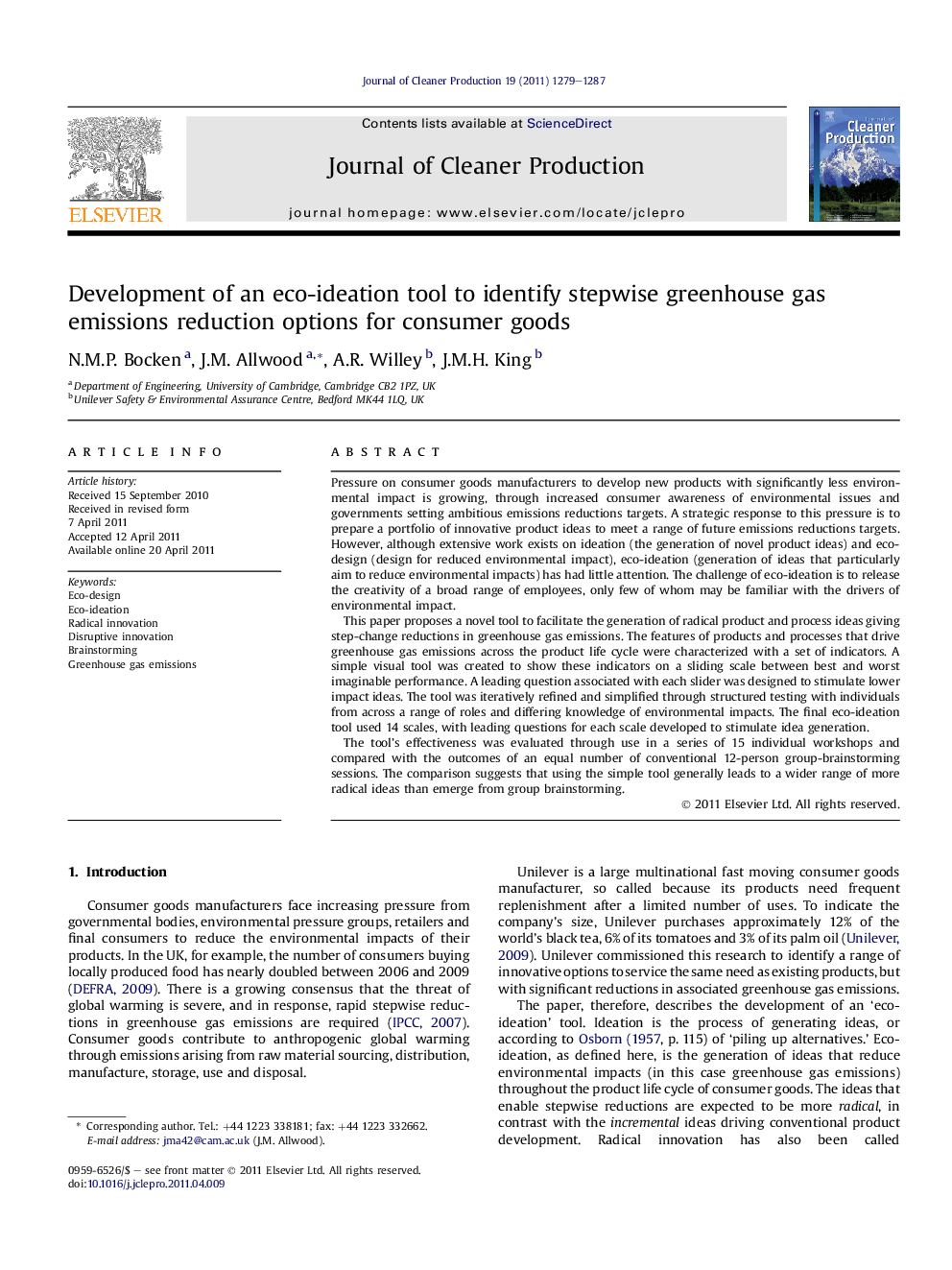| کد مقاله | کد نشریه | سال انتشار | مقاله انگلیسی | نسخه تمام متن |
|---|---|---|---|---|
| 1746125 | 1018081 | 2011 | 9 صفحه PDF | دانلود رایگان |

Pressure on consumer goods manufacturers to develop new products with significantly less environmental impact is growing, through increased consumer awareness of environmental issues and governments setting ambitious emissions reductions targets. A strategic response to this pressure is to prepare a portfolio of innovative product ideas to meet a range of future emissions reductions targets. However, although extensive work exists on ideation (the generation of novel product ideas) and eco-design (design for reduced environmental impact), eco-ideation (generation of ideas that particularly aim to reduce environmental impacts) has had little attention. The challenge of eco-ideation is to release the creativity of a broad range of employees, only few of whom may be familiar with the drivers of environmental impact.This paper proposes a novel tool to facilitate the generation of radical product and process ideas giving step-change reductions in greenhouse gas emissions. The features of products and processes that drive greenhouse gas emissions across the product life cycle were characterized with a set of indicators. A simple visual tool was created to show these indicators on a sliding scale between best and worst imaginable performance. A leading question associated with each slider was designed to stimulate lower impact ideas. The tool was iteratively refined and simplified through structured testing with individuals from across a range of roles and differing knowledge of environmental impacts. The final eco-ideation tool used 14 scales, with leading questions for each scale developed to stimulate idea generation.The tool’s effectiveness was evaluated through use in a series of 15 individual workshops and compared with the outcomes of an equal number of conventional 12-person group-brainstorming sessions. The comparison suggests that using the simple tool generally leads to a wider range of more radical ideas than emerge from group brainstorming.
Journal: Journal of Cleaner Production - Volume 19, Issue 12, August 2011, Pages 1279–1287